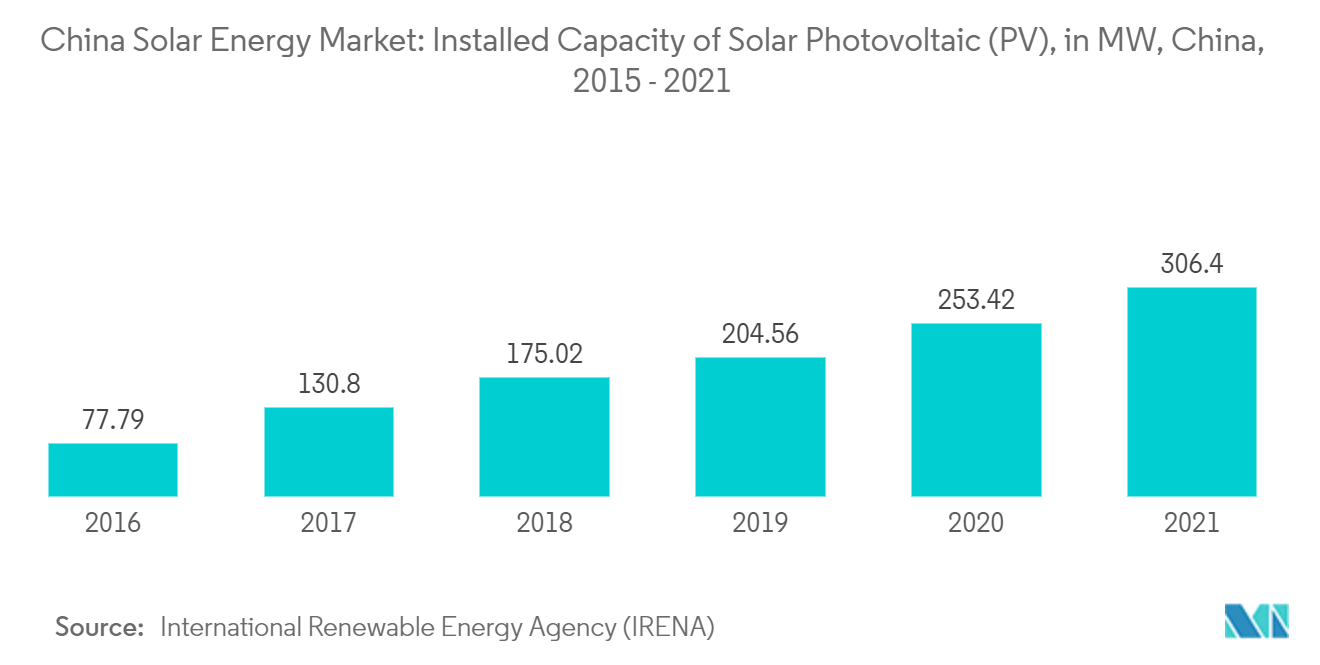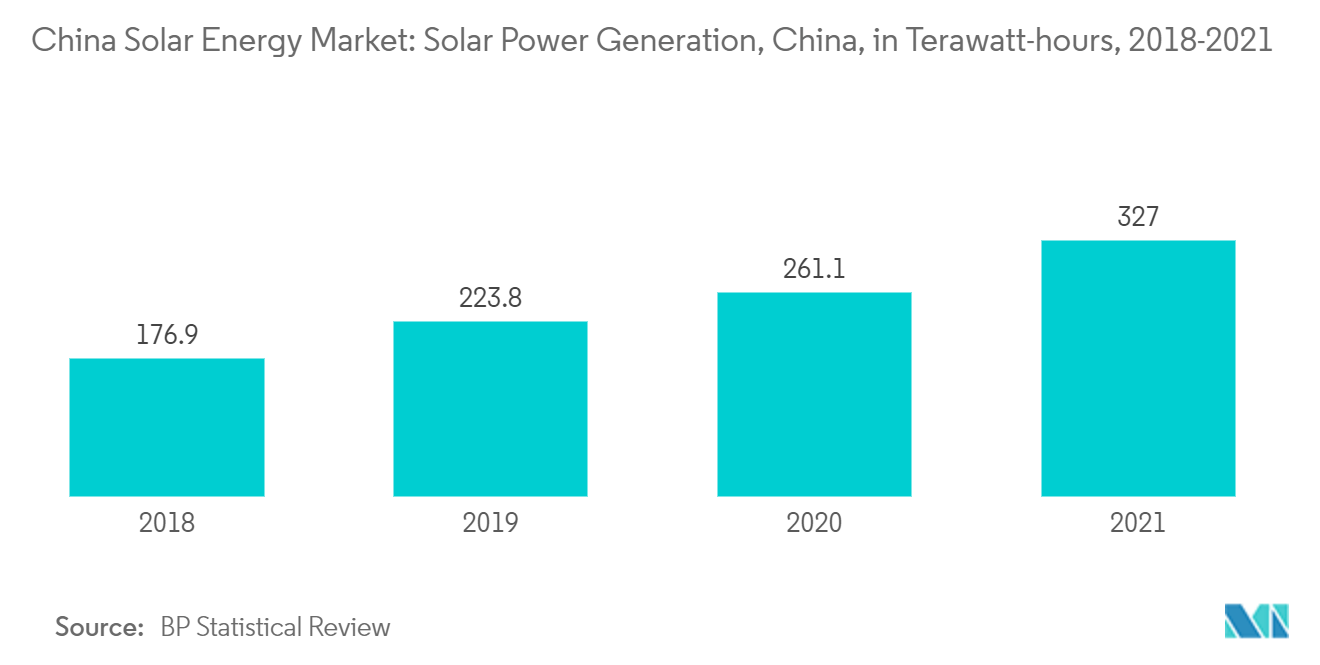Market Trends of China Solar Energy Industry
This section covers the major market trends shaping the China Solar Energy Market according to our research experts:
Solar Photovoltaic (PV) Segment to Dominate the Market
- The solar photovoltaic (PV) segment is estimated to witness significant growth during the forecast period owing to the declining cost of solar modules and the flexibility of these modules for various applications like water heating, electricity generation, and others.
- According to the International Renewable Energy Agency (IRENA), the installed solar PV capacity was around 306.4 GW in 2021, up from 253.4 GW in 2020 in China. The growth resulted from huge deployments of solar PV installations, particularly for utility projects. China's Center for Renewable Energy Development (CRED) plans to increase its solar PV installed capacity.
- The expansion of solar capacity across the country will likely directly impact the solar PV segment as the major solar power generating facilities deploy PV modules due to their versatility.
- For instance, by the end of 2022, the country plans to commission Xiangyang Solar PV Power Plant, with a capacity of 100MW, located in Hubei Province. The project has an investment cost of USD 200 million. Further, the country plans to construct around 400 GW of solar and wind projects in the desert area of China. The plant is expected to be commissioned by 2025.
- Therefore, the above developments in the solar PV segments are estimated to drive growth during the forecast period.

Supportive Government Policies to Drive the Market
- The government in China is implementing supportive policies to achieve carbon neutrality, and this is one of the major growth-driving factors for solar energy in China. For instance,
- Moreover, the country is heavily investing in renewable energy to reach the targeted limits of its two carbon goals; to reach peak emissions by 2030 and carbon neutrality by 2060. The country is said to be the biggest investor in renewable energy globally.
- Apart from this, the country is also one of the largest emitters of carbon as the country has lots of fossil fuel-based power generation facilities in operation. In 2021, the country accounted for about 30% of global emissions. Thus, in order to achieve the nation's carbon-neutral goals, the country is significantly investing in renewable energy, including solar.
- China aims to increase the share of non-fossil energy consumption to 20% by 2025 and 25% by 2030. Also, the country aims to install more than 1200 GW of wind and solar power capacities by 2030.
- Solar energy accounts for an electricity generation capacity of 327 Twh in 2021 in China. In 2021, the country also added around 55 million KW of new solar capacities. Also, solar contributed to around 30% to new generation capacity in the nation and around 13% of cumulative capacity.
- All the above-mentioned factors and developments are anticipated to boost the solar energy market of China during the forecast period.


